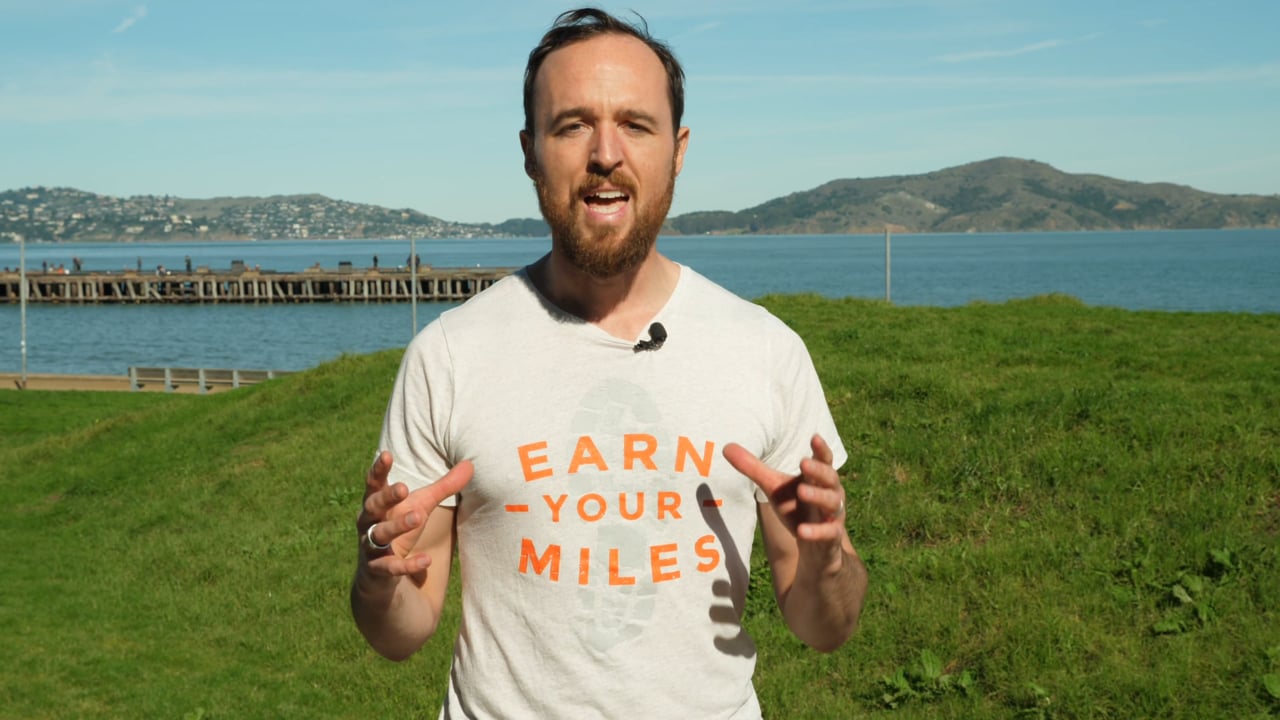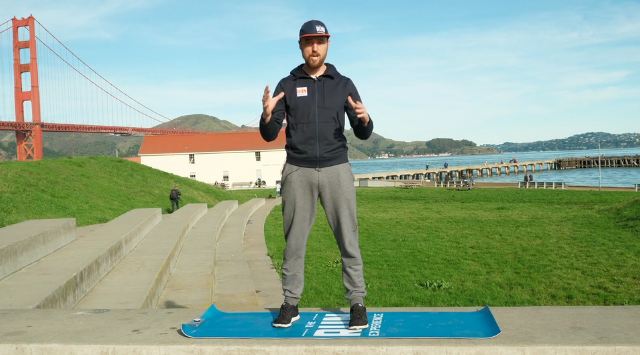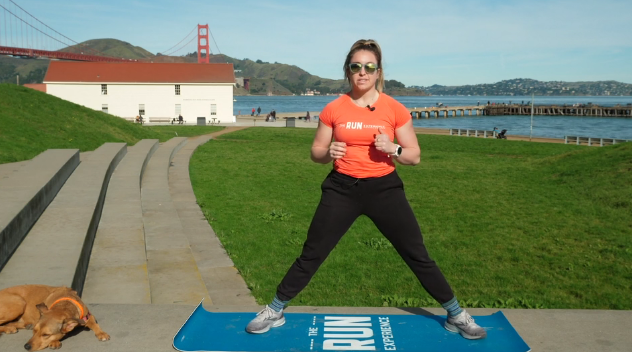Welcome to Quick Start Guide
Quick Start | Runner’s Maintenance Videos
Maintenance Videos
“When we focus less on fixing what we consider to be inadequacies and more on reinforcing our strengths, we can realize potential we didn’t even know we had.” – Lindsay Crouse
Here’s a collection of our favorite body maintenance videos for you to use as a reference library for learning to take care of all the parts of your body that you depend on every time you run.
- Feet: How To Keep Them Happy…
First off, I know my big toes are painted. And I also know you like it.Now, let’s dig into these 3 exercises.
1. Lacrosse Ball
This is SUCH an easy exercise to do. And it feels so darn good after a long day or a good run. The plantar fascia is a wonderful sheet of connective tissue that covers many of the 26 bones of the foot. Keeping it supple is imperative to allowing proper sliding of all those little joints. Plantar fasciitis is one of the most common injuries seen in running, and adding a little tissue work down there goes a long way. Try both moving East to West across the foot and moving North to South from top to bottom.2. Toe Splaying + Rotating
I’m sure by now you have noticed a trend in shoes moving towards having a larger toe box. This happened once we began to understand that the toes should not be shoved into our shoes like a downhill ski boot. The toes are meant to splay in stride. And this exercise is a great way to restore that tissue capacity for the toes and increase some blood flow in those little joints.3. Weighted Toe Extension
Runners tend to get tight toes (especially the big toe) which can lead to all sorts of biomechanical compensations. By encouraging a normal range of motion in the toes, we may actually make our foot-strike much more fluid and stable. - Lower Leg (Calf, Soleus, Achilles, etc) Injury Prevention
As you can imagine, the lower leg take A BIG beating in running. The calf-achilles-arch complex is one of the coolest weapons we have as humans because of the high elastic potential energy yield (in other words, we can move ourselves pretty quickly and efficiently).
Some of the most common areas that flare up when people first begin running are the calves, achilles, ankles, feet, etc (aka, the lower leg). So learning to take care of those puppies should be high on the to-do list!
1. Supinator/Pronator Sandwich
The Peroneals and the Tibialis Posterior hang out on the outside and inside of the lower leg, and work together to both create and resist pronation and supination of the foot. And they can actually be kind of tricky to get at! Get two balls (I have a baseball and a lacrosse ball here), pin one between the ground and the meaty outside portion of the leg in front of the calf (Peroneals). The other ball will go right behind the sharp posterior aspect of your Tibia (Posterior Tibialis and apply pressure with your hand. The balls don’t necessarily need to be right on top of each other. From there, apply as much pressure as you want then perform 5 circles with the foot (both directions) before moving the balls to a new location.2. Broomstick Bash
This is one of my favorites. Unlike foam rolling, you are really in control of the pressure. There is no substitute for having healthy tissue in the Calf and Soleus. If you’re one of those people that blackout and faint when massaging your calves, this is for you.
Take a broomstick (or anything like it) behind your back and sit back, placing the broomstick anywhere along your lower leg. Go to work! Roll those sticky spots by both going back and forth and side to side. You can work all the way from right behind the knee, down to the achilles.3. Ankle Opener
This exercise is a wonderful way to get some loaded plantar flexion to open the front of the ankle. You may also experience a big stretch on the tissue in the front of your lower leg (Tibialis Anterior).
Start in a lunge stance with your back knee on the ground as well as the top of the foot. Sit back onto your foot and open ankle! - Hamstrings and Glutes
Here are 3 easy to do exercises to keep your glutes and hamstrings happy. Both these groupings of muscles require lots of maintenance when running (especially after high speed/intensity days)! Then also consider how much time we spend sitting, mushing those muscles down and junking them up. Unlock your hamstrings and glutes for a more fluid and powerful stride!Here are 3 easy to do exercises to keep your glutes and hamstrings happy. Both these groupings of muscles require lots of maintenance when running (especially after high speed/intensity days)! Then also consider how much time we spend sitting, mushing those muscles down and junking them up. Unlock your hamstrings and glutes for a more fluid and powerful stride!
1. Deep Lunge + Knee Drive
This is a wonderful warmup exercise to get both your hips open and your hamstring moving.
Focus points:
• Keep back knee off ground.
• Keep hands and front foot flat on ground.
• Drive front knee as far back as comfortable.2. Seated Hamstring Massage.
This should be done after exercise or on rest days. This exercise is a wonderful way to get tissue work going on the hamstrings in ways that foam rollers really can’t.
Focus points:
• Sit tall! Slouching will greatly limit the efficacy of this.
• Start with the ball high (right below sit bones) and work you way towards knee after a couple good reps in each spot.
• Don’t forget to work outside and inside as well!3. Seated Glute Massage.
Like the previous, this is one to do after exercise or on a rest day. The glutes can get very matted down and tight if we spend large amounts of time sitting throughout the day. And using a lacrosse ball (or any firm ball) can do wonders to restore function to those tissues.
Focus points:
• Cross leg you are working on to pull tension in glutes.
• Work all around the glutes, hunting down tight spots. Circle around the head of the femur.Get after it!
- Quads and Anterior Hip
As runners we can see some really messy things happen in the anterior compartment of the upper leg and pelvis. Specifically, if we are (sitting) desk working runners, we are almost assuredly on the path to a funked up front side. And creating healthy quad and anterior hip function is imperative to running health and longevity.
1. Couch (Death) Stretch
Guys, if I had to choose one maintenance exercise to do the rest of my life, it would be this. Well, maybe shavasana. But seriously, if you want to take yourself seriously as a runner, this needs to be in your daily arsenal. If you have a wall at home, you’re ready to go.This targets both the quads and the hip flexors. Your job is to challenge this position by driving the extended hip forward as much as possible with a neutral back. Keep your back organized by engaging your glutes and abs the whole time! 2-3 min each leg.
2. TFL Smasheroo
We give this a playful name because massaging it doesn’t feel super great ???? The Tensor Fascia Latae is a small, but powerful muscle which sits in your front pocket and is continuous with the IT band. If you want knee issues, weak glutes, or low back tightness, be sure to never take care of this thing.A Softball is preferred, but a lacrosse ball or baseball will do just fine. Position the ball right on the TFL (again, located in your front pocket area) and target tender spots. Move side to side, breathing and doing your best to relax into the ball.
I know it’s almost Fall, but don’t let pumpkin spice latte’s come before your tensor fascia latae’s. 3-5 minutes each leg!
3. Distal Quad
The four muscles of the quad have a common tendon called the patellar tendon which connects all those muscles to the knee. And as you can imagine, with 4 big powerful muscles feeding into one spot, we can see some serious tightness occur.But from a positive note, we have an opportunity to make some really effective change just by spending some effort in one spot!
Place a ball right above the patella (medial, on top, or lateral) and find some tender spots. Once you find some, hang out there and flex and extend the knee! Perfect exercise for Netflix.
- Hips
In the words of Shakira, “My hips don’t lie.” And she’s right! Your hips are the foundation from which you move and problems here are often times very impactful. Maintaining healthy hip range of motion is imperative to function.
1. Squat
Squatting is necessary. Period. It is one of the most important things we can do in terms of seeing and diagnosing unhealthy joints/muscles.Try holding 1-2 minutes in each position: normal width, feet together, feet wide. Can you do it? What was limiting you?
2. Pigeon
This is a great 2-for-1 stretch since it puts flexion/external rotation demands in the front, and extension/internal rotation in the back.Loosening both of these ranges up will do wonders for your stride and power generation. This is also a great exercise to do to un-do a long day of sedentary time.
3. Hip Ext + Heel Pull
This exercise is similar to the Couch Stretch from last week. We wanted to show you this one so you have options to work on hip extension without the need of a wall!Like the Couch Stretch, this will help you restore hip extension capacity, which is crucial for stride fluidity. Tight hip in extension = funky leg swing = cascade of issues.
- Band Assisted Exercises
Most of our maintenance exercises have either required no equipment or items used for massage. In this video we will show you our 3 favorite exercises with the use of a band. All of these can be done without a band as well.
Why band? Bands are extremely useful tools to encourage joint tracking and positioning. They also will intensify a stretch if we feel we need a little extra love. When going into end ranges of joints, they have a natural rotation or movement within the joint, and adding a little help is sometimes needed!
1. Banded Hip Extension
When the hip is in extension, the femur naturally moves anteriorly in the hip socket. This can get junky or limited by tightness in the capsule, and that is where the band comes in.Place the band right below your booty and pull tension by backing away and reaching the leg back. Your focus is now to achieve as much extension as possible with an organized low back. Keep the low back and pelvis in good position by squeezing your glutes! 2-3 min per side.
2. Banded Ankle Dorsiflexion
When the ankle dorsiflexes the Fibula and Tibia are supposed to track backwards. And like the femur in the hip joint, these can get “stuck.”Place the band as low as possible on the ankle. Orient yourself so the band is pulling tension posteriorly and take a big step away with the banded ankle. Work through 30 knee drives forward (keeping heel down) on each leg!
3. Banded Flexed Hip Hamstring Drives
This exercise is great to both encourage posterior tracking of the femur in the hip joint in flexion (good) and challenge the hamstrings.Position the band as high into hip as possible and orient yourself so the band is pulling posteriorly. Bring banded leg forward, staggering the feet. Hinge forward at the hip with a bent knee and a flat back. Drive knee back into extension to challenge the hamstrings. Perform 30 reps on each leg!
- Long Run Active Recovery
Long Run Active Recovery…
It’s Sunday. You know why Sunday is typically notorious for runners? Because of your Sunday Long Run. This lower intensity weekly effort is a staple in most running programs. It’s a day for us to explore, get out on the trails, and push a slower, higher volume run than we typically see in the week.
BUT, just because it is low intensity, does not mean that it is low impact. These long runs can take a real beating on us. Heck, we are probably taking two times as many steps as usual! So having a routine AFTER your run is crucial. It’s wildly tempting after these long efforts to just sit on the couch and tune out the rest of the day.
While this is totally normal, spending 10 minutes actively moving your joints will do wonders to your recovery and how you will feel the next day. Find those end ranges in joints, move in and around them, get the blood flowing, and feel immensely better. It’s mentally tough, but hey, you didn’t sign up for running because it was easy right?!
- General Cooldown
Need a little routine to do after a workout or at the end of a long day? You will feel better getting some dynamic movement in your joints before you end your day. Here you go!





